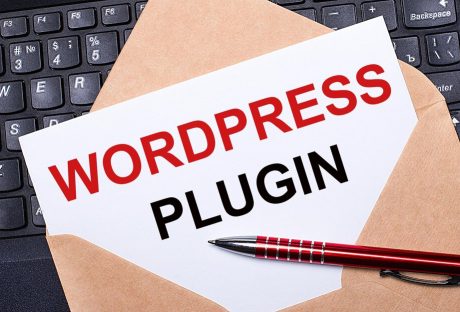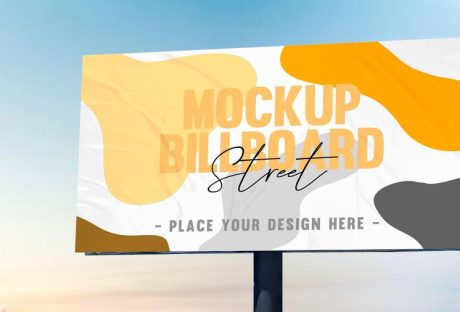Category: Dev & Design
ContentRally is a leading source of reliable news and trending topics on Dev Design. Get hard-to-find insights and advice on Dev Design from industry-specific leaders.

Role Of Sound Design In Creating Memorable Advertisements
Sound design in advertisements plays a crucial role in creating memorable experiences for viewers. It is the art of crafting sound elements to evoke emotions, convey messages, and enhance the overall impact of an ad. Sound design is like the invisible magic behind an ad's scenes. It's all your sounds, from the music to the little details. Moreover, it can make you feel happy, excited, or even scared. It can also help you remember the ad long after seeing it. However, let's explore how sound design influences the effectiveness of advertisements. How Does Sound Design Work? Let's explore some ways sound design makes ads unforgettable: Setting the mood: Imagine an ad for a refreshing drink on a hot day. The sound of ice clinking in a glass can make you feel cool and thirsty. Ultimately, it makes you want the drink even more! Building suspense: What if the ad is for a new thriller movie? Creepy sound effects and a tense score can make you feel on edge. However, you will be dying to know what happens next! Making you laugh: Funny sound effects can be the secret of a hilarious ad. A cartoon character's wacky squeaks or a silly sound when someone trips can make you chuckle. Finally it makes you remember the ad. Highlighting key moments: Sound design can draw your attention to important parts of the ad. Moreover, a dramatic drumbeat might emphasize a product launch, or a whooshing sound could show a car speeding by. Importance Of Sound Design: More Than Music And Sound Effects Sound design is not just about music and wacky sound effects. Here are some other things sound designers use: Voiceover: A friendly voice explaining the product can make you feel like you are having a conversation. Foley sounds: These are everyday sounds recreated in a studio. Think of the crunch of potato chips or the rustle of clothes. They add a layer of realism to the ad. Layering: Sound designers can layer different sounds to create a rich and textured soundscape. This can be anything from bustling city noises to the hum of a machine. Silence: Believe it or not, silence can be powerful too. A quiet moment in a loud ad can make you pay attention to what's happening on screen. The Main Components In Sound Design The role of sound design in advertisements is quite important because sound is one of the most important elements in reaching your campaigns. Sound design is an integral part of the entire marketing process. Moreove, with the help of sound desinging, you can evoke the emotions, attitudes, and behaviors of the target audience. However, in this section, we discuss and explore some of the main concepts associated with sound design. Sound Design To understand the role of sound design in advertisements, we must first understand it thoroughly. Sound design is the process of creating the original sound. Besides, it also helps modify the existing ones. Ultimately, it suits the purpose of the advertisement campaigns. Sound design enhances immersion, design, and the campaign's ultimate appeal. It also assists in creating and restoring memories. Moreover, sound design professionals can create a distinctive logo and an ambient soundtrack to set the entire mood. Sound design is an important part of this overall brand design. Sound Editing Sound editing is one process for arranging and modifying sounds. It helps create an audio track that is coherent and consistent throughout the entire brand campaign. There is a lack of consistency in the sound output and design of the entire campaign. This is where the experts have their own role to play. The sound editors are responsible for working continuously on coherence. Moreover, the editor adjusts teh volume and pitch and, at the same time, the timing of the sound to enhance or alter the sounds. This is one part of the entire development. The sound designers Sound Mixing This is one of the most important concepts within the periphery of sound design. It is the process of combining different sounds into an audio track. The experts usually balance each sound's levels, dynamics, and frequencies. The sound mixing creates a harmonious audio that creates an impact. They also de-emphasize some of the sounds according to the main objective of the campaigns. A sound mixer can create the right amalgamation of music, sound, and voice. Moreover, they use diverse techniques to mix the sound and create a distinctive effect. Creating The Most Engaging And Memorable Sound You have understood the role of sound design in advertisements. However, in this section, we discuss some tips and techniques that can help you design the most effective and memorable campaigns. First, you have to define the values and personality of the brand Before creating the sound, you must have a clear idea of what your brand states and stands for. Discuss with the professionals the mood and style that you wish to convey with the help of your brand. At the same time, you have to create the intent. Other than this, you have to select from the sound effects through which you can select the right message for your audience. Again, you need to use the elements of sound that help create the right contrast. It helps create coherence, consistency, and, at the same time, flow. The Power Of Sound Branding Great sound design can even help create a brand identity. Think of the iconic jingle for a fast-food chain or the roaring lion for a car company. These sounds become instantly recognizable and create a strong connection with the brand. Sound design is a powerful tool in advertising. It can evoke emotions, enhance brand identity, create memorable experiences, and ultimately drive consumer behavior. By understanding the role of sound design and using it effectively, advertisers can create ads that resonate with their audience and leave a lasting impact. So next time you see an ad that stays with you, take a moment to listen. You might be surprised by how much the sound design has to do with it! Learn More Also: What Does Sound Dampening Mean? 5 Awesome Tips to Help You Sound Better When Recording Presenting Atkin Guitars: Artisan-Crafted Wonders With Astonishing Sound!
READ MOREDetails
Get On The Online Market With The Best Web Design Experts In Brisbane
Do you have all that is needed to launch your online brand into the next big deal? Owning a powerful and interesting digital domain in the digital era makes it possible to survive in a highly competitive environment. Your online store is where most customers come into contact with your business; thus, it should be good enough to reflect all that you do. If you aim to become the star on Brisbane’s web design map and make your audience keep a mark on your brand, then just give a volley to our Brisbane web design team and we shall take your concept and turn it into reality. Let us nevertheless dive into how a professional website design may be the tipping point your business is looking for. Web Design And Why It Should Matter Have you ever been to a website that had a bad visual design or was challenging to use? That's what confirms that web design makes sense. Web design is not just about creating and placing web elements, but more about delivering the best user experience. It consists of everything starting from layout, and colors to fonts and graphs. Using a clean and user-friendly web design is key because it impacts how the online world will see your brand. A properly designed website not only brings in visitors but also holds them focused, thus resulting in high conversion rates. To be successful in today’s digital age where first impressions are formed in a few seconds, a site that is pleasant to the eye and very easy to use stands out. Web design is about more than just graphics; it involves the aspects of functionality and user-friendliness as well. Navigation, loading times, and device compatibility in a professionally built website lead to higher user satisfaction and loyalty and they are significant contributors. Therefore, it doesn't matter whether you are a small business or a big company, investing in designing internet sites is vital for building credibility and generating favorable online interactions. Profits Of A Website Designer When designers talk about your website, they mean the website design that contributes to the attraction and retention of website visitors. An expert web designer that you hire to develop your site will bring in the required expertise and creativity needed to give you an edge over the competition. Find out more at: https://digital8.com.au/ Firstly, the chief advantage of employing a professional is their skill in developing a website that is both visually appealing and user-friendly, oriented to your brand. This is crucial when trying to develop a level of trust with prospective clients, thus influencing them to delve into the matter even more. Besides that, they also recognize the significance of reactive design, and your site looks fantastic on any kind of device. This results in a higher conversion rate due to the user experience being smooth on all the devices used to visit your site. Professionals are also actively involved in the industry, so they remain informed on the current trends and technologies. Consequently, your website stays updated and attractive to visitors. Additionally, their expertise can be a great tool for having your site optimized for search engines, which can enhance your visibility on the web. Hiring professional web design services will enable you to get ahead of your competitors and achieve a strong online visual presence. Case Studies: Brisbane Businesses’ Case Studies Of Success The case studies are a touch of truth, the fairy tale stories of business in Brisbane. It is evident how improving the web design strategy can create magic in the brand's image. Let us consider the case of a bakery shop that has shifted from a boring to a dramatic look with an eye-catching design and an efficient layout. Besides, boutique clothing that has greatly expanded its online sales after redesigning its website to best accommodate its brand style, as well as appeal to trendy customers, is no exception. These stories being successful examples underscore the transformational effect of powerful professional web design services in the process of boosting the brands and increasing business growth. Upon investing the budget in luxury web design, Brisbane businesses transformed the opportunities that were closed to new ones. The businesses expanded its reach and directly communicated with customers. It's not just about the appearance, but the whole creation of the digital experience that convinces potential buyers to buy the product. From Brisbane's Top Web Design Service Providers, The Services Offered Offering web design services in Brisbane to help your brand grow, our leading web experts will work with you on the tasks that will make you stand out. They are experts who know how to create websites that are visually appealing and user-friendly, and that make an everlasting impression on visitors. With the use of responsive web design that delivers the best user experience on any device and e-commerce solutions that drive traffic, leads, and sales, these specialists have the expertise to bring your digital vision to life. Achieving this takes an approach featuring created specifically designs as well as proper planning from Brisbane's leading web designers who work closely with their clients to better grasp what they want and give them results that are beyond what they expect. Whether it is a full website renovation or just some upgrades, the professionals have all the necessary arsenal and skills to make your digital presence better and increase your engagement. Their array of comprehensive services covers search engine optimization and content creation from the inception, and they incorporate branding and graphic design into it. The expert web designers that you will hire will guarantee that the most pivotal part of your online presence is in good hands. How To Find The Most Qualified Web Design Expert For Your Brand The design of the website must be built by an expert for your brand. Check their portfolios, how much experience they have, and the testimonials they have. Good communication and representation of your brand vision are the keys. And let’s not forget about deadlines, expenses, and after-sales support when the decision is made. Joining hands with Brisbane’s most celebrated web design professionals enables you to level up your online presence and beat the competition offline. Be sure that the professional you choose is adequately qualified and has the right set of values and goals to help you get to long-term success. The website is the first platform where you meet potential clients; therefore, the first impression is very important; go for the best partner on your route to online success! Additionals: Master’s In Business Analytics: Is It Worth The Effort? Your Business Needs Marketing To Survive – Here’s Why Content Marketing Campaign Strategy For Small Business
READ MOREDetails
Beyond Code: The Soft Skills Every Web Developer Needs For Success
Web development is a career field with a lot of opportunities developers can explore. As the digital space grows, the need for tech professionals also grows to the next level. While coding is a key tech skill that ensures web developers deliver their services appropriately, there are also other soft skills that play a key role in streamlining the whole web development process. As a student aspiring or already undertaking a web development course, you should learn and master the soft skills outlined in this guide and how to get phd thesis writing help to make your career in the space of web development worth every effort. Why study web development? Like any career choice, web development has lots of benefits it offers expert developers. Among the reasons why you should consider taking a web development course include the following? Many job opportunities Web development is a promising career field, and there are lots of job opportunities for web developers of all levels. Even if you are just a beginner developer, you won’t have a hard time trying to get the next opportunity to showcase your web development skills and knowledge as you build your portfolio and gain experience in the industry. Earn a good income If you are wondering if web developers are paid well, the answer is absolutely yes. Apparently, web developers are among the best sought-after skills in the tech field. As a result, web developers pocket an admirable salary range. Highly flexible With web development skills, you can work remotely from anywhere. Whether your dream is to work with a specific tech company, you can always achieve this goal once you gain web development skills. Still, you can work as a freelancer from anywhere and make good earnings from it. The high flexibility rate that comes with web development is all a person requires to build their web development profiles and make more money from the business venture. It’s creative and fun Finally, learning web development enriches a person with creative skills, analytical thinking, and problem-solving skills. Therefore, you can take as many opportunities as you can to showcase your creativity levels in the tech space. Related: Questions To Ask When Working With A Web Developer Soft skills every web developer should have Apart from coding and programming skills, soft skills play a key role in ensuring web developers deliver services and processes promptly. These soft skills include the following: Teamwork As a web developer, there comes a time when you have to collaborate with other professionals to bring to life a certain project. These professionals could include a team of developers. Project managers and designers. All these professionals must collaborate as a team to streamline the project processes, ensuring everything turns out successfully. Therefore, the ability to work with outer teams is a must-have soft skill for web developers. Different opinions from different experts always help stakeholders make informed decisions that would see the company grow to the next level. Open-mindedness As an expert web developer, you should learn how to adapt to changes, especially implementing new ideas and changing the dimensions of the project to make the project at hand viable and useful. In the space of web development, even an idea that seems bad might turn out to be resourceful if given a different view. Besides, being open to different ideas opens more opportunities for projects you can work on. All these new ideas can come from clients, team members, and other members of the company at large. Accountability Accountability is all about owning or being accountable for your actions. In the space of web development, every decision you make counts to the final results. While it can be a hard decision to admit a decision that led to undesirable results, it always creates an easy time for the entire team working on a web development project. If you don’t accept and account for a mistake you made that led to undesirable results, it is possible for your team members to repeat the same mistake in the near future, yet it is something you could have shared before to avoid it repeating. Time management Sometimes, web development projects come with the required timelines. Besides, you can have several projects you are working on, and you will need good time management skills to ensure you achieve and deliver your objectives appropriately. For instance, you could plan the time to plan, do coding, and team to create new ideas with the team members. Don’t let activities happen just randomly. With good time management skills, you will know what to prioritize to streamline the whole web development process. Remember, you will also need time to rest and recharge yourself. Without a proper time management approach, you may end up multitasking and working on different projects, a move that will decrease productivity instead of maximizing productivity. You can implement the Kanban technique for task visualization or the Pomodoro technique for working with meaningful breaks to maximize production. Communication Apparently, good communication is a skill that cuts across varied professions. As a web developer, good communication will enable you to converse effectively with your team members as you collaborate to make the project turn out successfully. Besides, when conversing with clients, good communication will help you understand the requirements of a client, ensuring you deliver the required results promptly. In web development, too, there is customer feedback. You must master and interpret customer feedback effectively to adjust the project’s requirements to suit what users need. This can only be achievable through practical communication means. Creative skills Web development isn’t all about programming and writing codes. It is all about creating creative software solutions that will solve existing problems. Therefore, as a web developer, don’t limit yourself only to tech skills. Put yourself in a user’s shoes and come up with creative solutions that will attract more users to a specific product or service. Conclusion If you are already on the road to becoming the next top-notch web developer, you can be sure your career future is on the right path. As you acquire tech skills, don’t overlook the need to put into action all the soft skills as described in this guide. Read Also: Everything You Need to Know About Website Development Services 15 Ultimate UI/UX Website Inspiration For Developers 9 Tools To Test If Your Website Is Mobile Friendly
READ MOREDetails
Crafting Personalized Inflatables: Aligning Designs With Your Unique Taste And Preferences
Do you want an inflatable in your own personal design? That's a great choice! Or maybe you want an inflatable sign for your business. Or maybe you're looking for something more fun, like a bounce house or an inflatable slide. Whatever you need, there is a wide variety of options to choose from. And if you can't find what you're looking for on the market, you can have it custom-made. How cool is that? Two of the most defining benefits of inflatables are their versatility and customizability. Versatility, because they can be used in a variety of settings, from indoor parties to large festivals. You can use them for party decoration, amusement park rides, advertising, and many more. And customizability, because they can be made to match your vision. If you have a specific need or preference, you can simply give your designs to an inflatable manufacturer and have it done in that exact image. You can choose the size, shape, color, and design of your inflatable. The ability to customize inflatables allows you to add a personal touch and create a unique design that is not available anywhere else. In this article, we will explore the idea of crafting inflatables that reflect your unique tastes and preferences, helping you to create designs that express your individuality. Let’s dive into it. Why Personalized Inflatables? The market is already saturated with generic inflatable designs. If you go online or visit inflatable stores, you will find almost the same designs everywhere. So if you want to stand out, you need to be different from the rest. And to be different, you need to be unique. Your custom inflatable design should not be ordinary, or else you will run the risk of looking like everyone else and having no special edge. Here are some more reasons to consider crafting personalized inflatables. Uniqueness Crafting your own personalized inflatable designs helps you to get a one-of-a-kind design that nobody else will have now - and in the future. This gives you a sense of exclusivity, as you know that your inflatable is unique and that no one else has the same one. Express Your Individuality It also allows you to express your own personal style and creativity, as you can choose the colors, patterns, and design elements that you want. As a result, your inflatables become an extension of your personality. This can be particularly valuable for businesses that want to advertise their brand identity to potential customers. For instance, if they want to appear as a fun brand, they can use certain blow up inflatables or replicas of their products to mesmerize potential customers and get them hooked on it. Memorability Something that stands out is sure to be remembered. People will remember the unique inflatable that caught their eye and was different from the others. So if you want to create an inflatable that truly leaves a lasting impression on people, you should definitely consider creating a personalized inflatable. How to Craft Personalized Inflatables The process of creating your own personalized inflatables begins when you have a clear idea of what you want. It may seem like a daunting task, but don't be discouraged; the inflatable manufacturer will handle most of the heavy lifting. With the right guidance and a touch of creativity, your unique inflatable vision can come to life. Here is a simple breakdown of the process. Choose the Right Type of Inflatable Consider your specific needs and goals when choosing an inflatable. What do you need it for? Will you be using it for a business exhibition? If so, you may want to consider a product replica, inflatable signage of your business logo, or regular inflatables designed with your brand elements. The Design Concept Think creatively about your inflatable design. What message do you want to communicate, or what theme do you want to explore? You could sketch it out on paper or simply describe your ideas to an inflatable manufacturer. They will have a designer create a visual representation of your concept. Material and Size Once you are happy with the design, you can move on to choosing the material for your inflatable. PVC and nylon are the most popular choices, but you should make your decision based on your needs. Both materials have different strengths and prices. Nylon is generally stronger than PVC. So if you need something that can withstand rough handling and the test of time, nylon may be a better choice. However, keep in mind that it is more expensive. The size is also important. You need the exact size of the inflatable that meets your needs, as this will help ensure that it fits properly and is not too small or too large. Measure the dimensions of the area where you want to put them. Complete Your Order Make payment. Then wait. It usually takes a while for your inflatable designs to be manufactured. Finally, when your inflatable is ready to go, make sure to inflate it properly according to the instructions provided. Then sit back, relax, and watch as your inflatable designs come to life! Just remember to take good care of your inflatable so that it lasts as long as possible. In Conclusion If you think the world is already too full of generic designs, then personalized inflatables are the way to go. With these custom creations, you can express your individuality and capture attention like never before - whether it's for personal celebrations, marketing campaigns, or special events. Trust me, they're sure to make an impact! Read Also: Where To Display Large Halloween Inflatables: Transform Your Front Yard, School Front, And More What Type Of Inflatables Should You Opt For At Your Business Event 6 Steps to make Your Trade Show a Success
READ MOREDetails
A Beginner’s Guide To Playwright Inspector
As the world continues to shift towards a more digital landscape, the significance of quality web applications has become progressively apparent. Given the vast array of tools and technologies at the disposal of web developers, determining an appropriate starting point can prove challenging. Debugging is the method of identifying and fixing bugs or errors in software. It is a vital aspect of web automation testing as it contributes significantly to the dependability and precision of the automated test results. Playwright is an open-source cross-browser testing framework released by Microsoft in 2020. As stated by Systems Sciences Institute, the expenditure of addressing an error or bug discovered after product release was 4 to 5 times higher than pinpointing it during the configuration phase. The detected value during the maintenance phase can be exceeded by up to 100 times. Playwright developers operate at the API level and offer comprehensive tooling through the integrated Playwright Inspector. Playwright Inspector is a powerful tool that authorizes developers to efficiently test and debug their web applications. Also, it facilitates creating automation scripts by furnishing auto code generation capabilities. Playwright Inspector allows you to inspect the Document Object Model (DOM) structure of a webpage, interact with web elements, and inspect CSS styles utilizing the Playwright API. It authorizes stepping through tests, picking locators, editing live locators, and seeing actionability logs. This blog will dive into the basics of Playwright Inspector and explore its many features. So if you're ready to take your web development skills to the next level, buckle up and dive into the world of Playwright Inspector. Before that, let's have a brief understanding of Playwright. What is Playwright? Developed by Microsoft, Playwright is an end-to-end open-source web testing and browser automation framework. Playwright offers outstanding cross-browser compatibility and convenient features. This makes it a perfect choice for automation and quality assurance purposes. The playwright is a flexible, robust, and efficient framework. It supports multiple languages like JavaScript, Java, Python, C#, and TypeScript. Playwright utilizes a single automation API. This makes it steadfast and quick and produces consistent outcomes while running cross-browser testing. It provides a powerful set of testing features. These features can be utilized to simulate end-user interactions with the web application. Also, the framework authorizes testing complex scenarios such as file uploads, login flows, and other interactions. These test scenarios can be tough to test with other testing frameworks. The software platform furnishes developers with a comprehensive selection of standard and personalized locators. This facilitates the straightforward and effective identification of elements on web pages. These locators can pinpoint elements based on a variety of attributes, including text content, position on the page, and other distinguishing features. With Playwright locators, developers can confidently identify elements on the DOM, ensuring the creation of substantial and steadfast test suites. What is a Playwright Inspector? Playwright Inspector is a Graphical User Interface based tool that helps testers and developers record scripts and debug Playwright tests. The tool helps generate boilerplate code. This can be a suitable starting point for building codes. Also, it assists developers and the Quality Assurance teams save time when writing the test script from scratch. Software developers can utilize the time saved to comprehensively understand the codebase and make informed modifications, as required, to enhance the efficacy of the testing suites. The Playwright Inspector simplifies the process of debugging web applications. It is a browser-based development tool that facilitates developers to inspect, debug, and troubleshoot web applications. The tool authorizes developers to record user interactions, capture screenshots, and inspect HTML elements, CSS styles, and JavaScript code. Playwright Inspector furnishes a console for developers and testers to run arbitrary JavaScript code in the context of the inspected page. To scale Playwright Inspector, an AI-powered test orchestration and test execution platform like LambdaTest offers an online farm of 3000+ browser and OS combinations to execute the Playwright test. You can effortlessly test your application as its scalable cloud infrastructure enables parallel test execution where you can run test cases altogether. It can also integrate with your existing testing infrastructure. It effortlessly plugs into your Playwright tool, eliminating the need for complex configurations. LambdaTest's Playwright Inspector empowers you to debug and analyze Playwright scripts effortlessly. Inspect element properties, verify page behavior, and optimize automated tests using this user-friendly tool. Installation and Setup Instructions Installation and setup instructions are crucial for any software tool, and Playwright Inspector is no exception. As a beginner, it's essential to follow these instructions carefully to ensure that you can start using the tool without any issues. To install Playwright Inspector, first, you need to make sure that you have Node.js installed on your computer or laptop. Once you have Node.js, you can install Playwright Inspector through npm by running the command "npm i -g playwright-inspector" in your terminal. Upon successful installation, the tool can be initiated by executing the command "playwright-inspector" in your terminal. You can also use Playwright Inspector with other browsers like Firefox and Safari by installing the corresponding browser extensions. Following these instructions will give you a smooth and hassle-free experience of using Playwright Inspector, authorizing you to debug and troubleshoot your web applications with ease. How to Inspect Elements in Playwright Inspector If you are new to Playwright Inspector, you may be wondering how to inspect elements within your web page. Fortunately, Playwright Inspector comes equipped with a number of useful tools and features to assist you in efficiently identifying and inspecting elements on your web page. To start, simply launch Playwright Inspector and navigate to the web page you want to inspect. Once you are on the page, right-click on any element within the page and select "Inspect element" from the context menu. This will bring up the Playwright Inspector pane, where you can view the HTML and CSS code for the selected element. You can also view any associated styles and properties. From there, you can use the various tools and features within Playwright Inspector to further inspect and manipulate the element, making it easier than ever to identify and troubleshoot any issues within your web page. Benefits of Playwright Inspector The Playwright Inspector tool presents lots of benefits. Let us consider a few pivotal benefits of the Playwright Inspector: 1. Easy Debugging: Playwright Inspector facilitates the process of debugging Playwright scripts by furnishing a visual interface. This authorizes developers to inspect the page, make alterations to its state, and swiftly identify the cause of issues. 2. Record and Replay: The tool presents a record and replay feature that authorizes testers and QA teams to record end-user activities on the page and replay them for debugging purposes. The record and replay feature can help pinpoint issues that may occur only during specific user interactions. 3. Robust Logging: Playwright Inspector presents robust logging abilities that authorize testers and QA teams to outline the execution flow of the test script. This helps swiftly determine issues and fix them, thereby enhancing confidence in the code and application itself. 4. Intuitive Interface: The Playwright Inspector boasts an intuitive and user-friendly interface that is simple to navigate and operate, even for testers and QA teams who are new to the Playwright platform. 5. Cross-Browser Support: The Playwright Inspector facilitates the testing and debugging of applications across various platforms as it supports multiple Chromium-based browsers such as Chrome, Edge, and Firefox. This enables developers to ensure their applications perform optimally on different browsers. 6. Breakpoints: The Playwright Inspector tool is designed to enhance the testing process for software testers and QA teams. With this tool, users can set breakpoints in their test scripts, enabling them to pause test execution at specific points and thoroughly investigate the page's state. This increased level of control and visibility allows for improved efficiency and effectiveness in the testing process. Best Practices for Using Playwright Inspector The Playwright Inspector tool furnishes developers with an intuitive solution for testing web applications at scale. With the help of Inspector, developers and testers can debug their web automation scripts, view page elements and attributes, and pinpoint issues that may be causing the tests to fail. To make the most out of this tool, it is paramount to follow the best practices for using it. Here are eight best practices for using Playwright Inspector: ● Familiarize yourself with the Inspector UI. ● Utilize the search feature to swiftly pinpoint page elements. ● Utilize the highlight feature to visually locate elements on the page. ● Utilize the console to test JavaScript code and interact with the page. ● Utilize the network tab to inspect network requests and responses. ● Utilize the performance tab to pinpoint performance issues. ● Utilize the snapshot feature to capture a snapshot of the current page state for later analysis. ● Utilize the playback feature to replay test scripts and identify errors. By following these best practices, you can utilize Playwright Inspector to its full potential and optimize your web automation testing process. Conclusion Playwright Inspector is a powerful tool that can help developers troubleshoot issues and enhance the quality of their web applications. With its user-friendly interface and wide range of features, Playwright Inspector is a prominent addition to any developer's toolkit. By following the steps outlined in this beginner's guide, you can start utilizing Playwright Inspector today and take advantage of its many benefits. Whether you are a seasoned developer or just starting out, Playwright Inspector is a must-have tool for anyone looking to enhance their web development skills. Read Also: Mobile Testing With Appium On Lambdatest 10 Reliable Free Currency APIs For Your Business Using Tracking Code, Google Analytics Can Report On Data From Which Systems?
READ MOREDetails
Fast Track to Uploads: Speeding Up WordPress File Handling
In the bustling realm of WordPress, a swift and seamless user experience is paramount. And nothing sets the tone quite like rapid file uploads. Picture this: your website visitors eagerly await engaging content, but sluggish file handling dampens their enthusiasm. In this blog, we delve into the pivotal role of fast upload files in elevating WordPress usability. It will help us upload file fast on WordPress. We'll unravel the vexing challenges that often throttle upload speeds, from server limitations to bulky media. Enter the Filestack WordPress Plugin – a potent solution primed for advanced file management to upload file fast. Brace yourself for insights that propel your WordPress uploads into the fast lane. Hence, fostering unparalleled user satisfaction. What Are The Methods To Assess The Speed And Efficiency Of File Uploads? Assessing the speed and efficiency of file uploads involves several methods. One common approach is measuring upload time. It calculates the duration it takes to transmit a file to a server. Bandwidth utilization is another method. It involves analyzing how much of the available network capacity is utilized during the upload. Throughput evaluation involves assessing the amount of data successfully transferred per unit of time. Network latency measurement helps identify delays in data transmission. Tools like Ping, Traceroute, and online speed tests also provide insights into upload performance. For more information, please visit the website, This Vid. What Are The Bottlenecks In The Current Upload Process? The current upload process faces several bottlenecks that hinder efficiency and user experience. Network limitations often result in slow transfer speeds. Hence, frustrating users and delaying content sharing. Inadequate server infrastructure further compounds the issue, leading to processing delays and interrupted uploads. File format compatibility issues create additional obstacles. Furthermore, it necessitates time-consuming conversions. Cumbersome user interfaces and authentication procedures add complexity. Hence, discouraging seamless uploads. What Is The Impact Of File Size And Format On Upload Speed? File size and format significantly influence upload speed. Larger files require more time to transfer. Hence, causing delays and straining bandwidth. Complex formats require additional processing before uploading, further slowing the process. Optimizing file sizes and using efficient formats can enhance upload speed. Hence, ensuring smoother data transmission. How To Optimize The Server Environment For Faster Uploads? To optimize a server environment for faster uploads, start by meticulously analyzing server configurations and settings. Fine-tune parameters such as upload limits, buffer sizes, and timeouts. Implement server-side optimizations like compression and caching to expedite file processing. Utilize asynchronous processing and parallelism to handle concurrent uploads efficiently. Opt for high-performance storage solutions and consider Content Delivery Networks (CDNs) to distribute load. Regularly monitor server performance. Hence, diagnosing bottlenecks and adjusting configurations accordingly. How To Enhance Network And Connection Speed? Enhancing network and connection speed involves various strategies. Optimizing router placement, updating firmware, and reducing interference is vital to improve bandwidth and stability. Content Delivery Networks (CDNs) expedite file transfers by distributing content across multiple servers globally. This minimizes latency and accelerates data retrieval. Optimizing network protocols like TCP/IP and HTTP enhances data transmission efficiency. Prioritizing Quality of Service (QoS) settings for critical applications, employing data compression, and minimizing background processes further amplify network performance. How To Utilize Asynchronous And Parallel Uploads? Asynchronous upload techniques within WordPress can significantly enhance user experience and optimize performance. Asynchronous methods upload files in the background. Hence, allowing users to continue their tasks uninterrupted. To further expedite the process, parallel uploads can be employed. Hence, enabling multiple files to be transmitted simultaneously. Concurrency challenges meet through efficiently managing upload queues. Hence, ensuring seamless handling of simultaneous requests. Combining asynchronous and parallel strategies accelerates upload times and ensures smooth user interactions. Why Do We Need File Compression And Format Considerations? File compression is pivotal in our digital landscape, offering multifaceted benefits. Primarily, it slashes upload times by condensing data without compromising quality. This is crucial for seamless data sharing, a cornerstone of modern communication. Alongside compression, selecting judicious file formats is equally vital. Opting for efficient formats expedites transfers, which is especially vital when bandwidth is a constraint. How To Integrate Filestack WordPress Plugin? The Filestack WordPress Upload plugin facilitates hassle-free file uploads from local and cloud drives. Simply insert the [Filestack shortcode] into your post to define where the file should appear. Display files promptly, benefiting from the optimized page load time courtesy of Filestack CDN. Crop and edit images within the uploader or use file transformations to enhance media assets programmatically. Store files in Filestack's cloud storage or your preferred location. Filestack features seamless integrations, multi-file and large file uploads, in-app image transformations, asynchronous uploads, integrated CDN, and cloud storage compatibility. Installation Process Follow these steps to get started: Place the plugin folder into the /wp-content/plugins/ directory. Activate the plugin via your WordPress dashboard's 'Plugins' menu. Input your Filestack API Key. Use the shortcode [filestack] within a blog post or page to showcase the upload button. Alternatively, click the Filestack button in the Media section to initiate file uploads. Opt for "Insert Into Post" to add the CDN resource seamlessly. How To Perform Real-Time Monitoring And Performance Measurement? Real-time monitoring and performance measurement are critical for optimizing upload performance. Employing dedicated tools and plugins helps track upload speed, promptly identifying bottlenecks. Leveraging performance analysis tools allows real-time visualization of data throughput and latency. Regularly analyzing these insights enables data-driven decisions for enhancing upload speed. Swift interventions can be made, such as optimizing network configurations or upgrading hardware. Continuous monitoring ensures sustained improvements, creating a cycle of refinement. Read Also: The Best WordPress Plugins For Marketers Conclusion In the fast-paced digital landscape, optimizing WordPress file handling is paramount. Upload speed enhancements become a reality through diligent monitoring and strategic employment of performance analysis tools. Real-time insights illuminate bottlenecks. At the same time, continuous monitoring fosters a cycle of refinement. By embracing data-driven decision-making, organizations unlock the potential for rapid improvements. This dynamic approach ensures efficient uploads, fostering a seamless user experience and bolstering website credibility. Embracing the fast track to uploads becomes a strategy and a necessity for WordPress success. FAQs How Can I Upload Files Faster? Optimize network settings, use compression, and employ efficient file formats for faster uploads. How Can I Send 25 GB Files For Free? Utilize cloud storage services like Google Drive or WeTransfer for sending large files up to 25 GB for free. How Can I Send 100GB Of Files For Free? For free, use cloud storage services like Google Drive or Dropbox to send large files up to 100GB. How Can I Transfer 100GB Of Files Faster? Utilize high-speed internet, compression, and dedicated file transfer tools for swift and efficient 100GB transfers. Read Also: 4 WordPress Plugins to Make Your Blog More Powerful
READ MOREDetails
Interactive Website Tools: Exploring Strategies For Engagement And Conversion
Beyond the aesthetics of modern web design lies a realm of functionalities designed to entice, intrigue, and encourage action. It's not just about displaying information anymore; it's about creating a dynamic dialogue between the site and its visitors. From clever countdown widgets that build anticipation to popups that capture attention at just the right moment, interactive tools are redefining the digital journey. As you embark on this exploration, you'll discover how these tools can be the key to not only attracting eyeballs but also driving tangible results. So, are you ready to unlock the next level of online engagement and conversion? Let's dive deeper. Interactive Tools For Websites: Why It Is Crucial In the vast universe of the Internet, websites often face the challenging task of standing out amidst a sea of competitors. It's no longer enough to simply be online; success hinges on how well a website can interact with its users. This is where interactive tools make a monumental difference. The Link Between Engagement And Conversion Every click, scroll, or hover on a website tells a story — a story of a user's journey from a curious visitor to a potential customer. Engagement is the first step in forging a connection. When visitors are actively interacting, they're investing their time and emotion into what the site has to offer. This active participation paves the way for conversions, whether it's signing up for a newsletter, making a purchase, or any other desired action. Simply put, higher engagement can often translate into higher conversion rates. Benefits Of Interactive Features For Visitors And Businesses For visitors, interactive features offer a personalized, immersive experience. Instead of passively consuming content, they're invited to participate, making their online journey more memorable and impactful. Whether it's a quiz that offers tailored product recommendations or a chatbot providing instant support, these features make the user feel valued and understood. For businesses, the advantages are manifold. Interactive tools can lead to increased dwell time, providing more opportunities for branding and message reinforcement. They offer valuable insights into user behavior, preferences, and pain points, allowing businesses to fine-tune their strategies. Pioneering Engagement Tools: A Closer Look Delving into the world of pioneering engagement tools reveals a medley of innovative strategies designed to enthrall users and drive conversions. Here's a closer look at some game-changing tools that have redefined the way we interact online. Countdown Widgets How They Work: At its core, countdown widgets for websites are digital timers, ticking away the seconds and minutes of a particular event or deadline. Be it heralding the launch of a new product, highlighting the end of a sale, or marking the start of a webinar, these widgets play on human psychology. The ticking clock creates a palpable sense of urgency and anticipation, compelling users to act before time runs out. To maximize the effectiveness of countdown widgets, it's crucial to employ them judiciously. Overuse can desensitize users to a sense of urgency. Moreover, always ensure that the event or deadline you're counting down to holds genuine value for the user. Pairing the widget with compelling visuals and concise, action-driven text can further amplify its impact. Popups [caption id="" align="alignnone" width="2400"] Popups[/caption] Different Types Of Popups: Popups are versatile tools that can serve various functions. Informational popups. These are designed to update users about essential website changes or privacy policies. They're typically concise and straightforward, ensuring users are informed without overwhelming them. Promotional popups. They are the digital equivalents of storefront sale signs. These might advertise a limited-time offer or discount. Feedback popups. They might ask for star ratings, brief comments, or even detailed reviews, helping businesses understand their strengths and areas of potential enhancement. Email subscription popups. These popups invite users to stay connected by subscribing to newsletters, updates, or exclusive offers. Exit-intent popups. Triggered when the system detects a user is about to close the tab or navigate away, exit-intent popups present a final, compelling offer or message. The key to popups is moderation. Bombarding users with incessant popup messages can swiftly turn intrigue into irritation. Timing is crucial. For instance, an exit-intent popup can be a last-ditch effort to retain their attention. Similarly, understanding the user's journey can help in strategically placing popups for maximum effectiveness without being intrusive. Interactive Surveys And Quizzes Surveys and quizzes engage users actively, making them feel part of a two-way conversation. When a user takes a quiz, they're not just absorbing information; they're sharing insights about their preferences and needs. This enables websites to tailor content and offers precisely to the user, enhancing relevancy and driving engagement. Beyond personalization, these interactive tools are goldmines of data. By analyzing responses, businesses can pinpoint audience segments, refine product offerings, and sharpen their marketing tactics. In essence, every user interaction becomes an opportunity for businesses to learn, adapt, and evolve. Live Chat Features Live chat serves as a digital concierge, connecting users with businesses in real time. No more waiting on hold or navigating through tedious email threads. With just a click, users can pose questions, raise concerns, or simply chat, fostering a sense of immediacy and personalized attention. Gamification Elements Games aren't just for fun; they're powerful engagement drivers. By incorporating gamification elements like points, badges, or leaderboards, websites transform mundane tasks into exciting challenges. Whether it's completing a profile, sharing content, or making a purchase, gamification rewards users for their actions, making their digital journey feel more like an adventure than a chore. User Testimonials And Reviews Nothing vouches for a brand like the voice of its customers. User testimonials and reviews provide an unfiltered glimpse into real experiences, offering prospects both validation and reassurance. These authentic narratives, beaming with praise or constructively critical, solidify a brand's credibility, paving the way for trust and long-term loyalty. Avoiding Overwhelm: Less Can Be More In the intricate dance of digital engagement, it's not always about having more tools, but about wielding them wisely. While it might be tempting to incorporate every interactive feature available, bombarding users with too many stimuli can lead to cognitive overload. It's like walking into a room with blaring music, flashing lights, and a crowd vying for your attention all at once. The key is to curate and prioritize. A well-placed popup can be effective, but combine it with constant notifications, quizzes, and live chat prompts, and you risk alienating the user. Remember, the goal is to guide and engage, not to overwhelm. By being discerning in our choice of interactive elements, we can ensure that users not only stay but also enjoy their digital journey.
READ MOREDetails
Special Stock Motion Graphics Effects
Video content is more popular than ever before. Netflix has popularised the idea of binge-watching our favorite TV shows while video-sharing social platforms like YouTube and TikTok have seen the format reach new heights. While more people are watching videos today, we’re also seeing more people creating them. This is due to both the availability and accessibility of modern video editing platforms and the ease at which they can be uploaded online and shared with the world. If you want to start making your own videos, making use of motion graphics can be a fantastic way to stand out from the crowd. Let’s take a look at some of the best special stock motion graphics effects and discuss how they can be used in your videos. 1. Lower thirds As the name suggests, lower thirds of motion graphics appear in the lower third section of your video. These play an important role; they can be used to convey key information without distracting the viewer from what’s happening in the center of the screen. We see lower thirds of graphics all the time, often far more regularly than we realize. For example, when watching a news bulletin, the lower thirds of graphics are used for things like naming an on-screen speaker, summarising a current news story, or providing breaking updates from across the world. In the news, these lower-thirds graphics are referred to as chyrons. If you’re an amateur video maker, chances are you’re not going to be tasked with editing news shows for terrestrial television. So, what else can lower thirds be used for? On platforms like YouTube, growing a following of subscribers is important, and generating lots of comments and likes on your videos can help it perform better in search results and in recommended content. Lower thirds of graphics can be used as calls-to-action, encouraging viewers to subscribe to your channel, to like the video, or to comment and start a discussion among other viewers. Lower-thirds graphics can also be useful if you’re making informative content like tutorials. They can be used to convey further information to your viewers and to deliver tips, tricks, and reminders, without obscuring the primary focus of the video itself. 2. Overlays Motion graphics effects come in a huge variety of different styles, whether you’re looking for CapCut effects or Premiere Pro effects. One type of motion graphic effect you’re going to come across is the overlay effect. As the name suggests, overlay effects are placed over the main section of the screen, unlike lower-thirds effects which are localized to the bottom of the screen. What are overlay effects used for? This is a broad question, there is such a range of overlay effects out there, and each can be utilized to serve a different purpose. Text overlays are among the most common types. These place text directly in the center of the screen and can be used for transitioning between scenes or to deliver vital information to the viewer. Overlay effects can also include things like graphs, charts, and infographics. These are particularly common in corporate videos and in marketing material, they can be used to clearly and concisely convey complicated information in an engaging and informative way. Using an overlay effect can also be an artistic choice. They can filter footage to make it look more cinematic, with added depth and grain, or to change the color balance to suit the mood and atmosphere of your video. 3. CapCut CapCut is a video editing app made by TikTok parent company ByteDance. With over 200 million monthly users, it’s one of the fastest-growing apps in the world and is taking full advantage of the booming video creator marketplace. CapCut offers deep editing functionality, but the focus is on encouraging users to edit fun, engaging videos quickly and to share these across social media. One of the best ways to make your videos more engaging and to help them stand out in an increasingly oversaturated digital landscape is to use CapCut motion graphics. These can come in the form of small, animated figures that dance and move around, giving your content a playful, casual feel that will make your viewers feel happy and comfortable. CapCut motion graphics can also include things like arrows and pointers. These can be particularly useful for information tutorial videos, where certain elements might need to be highlighted to help viewers follow the tutorial correctly. 4. Slideshows Slideshows are perhaps the most basic form of motion graphics, but they still have a place in today’s world. Slideshows are simple sequences of images. They can be used to tell a story, convey a message, or simply show off some exciting, eye-catching images. Much of the creativity in slideshows comes from the transition effects used as one slide moves to the next. However, be careful not to overdo it with these transitions, as this can detract from the content of your slideshow. Conclusion Motion graphics are an incredibly important part of video editing. Use this guide to learn all about the different types and how they can be used in your videos. Read Also: Movavi Video Suite Review: A Comprehensive Tool to Create Videos Ways To Fix YouTube “Something Went Wrong” Prompt! The Ultimate Streaming Guide to Watch TV Online
READ MOREDetails
Simplifying Finance: The Role Of UX Design In Financial Services
Exposure to financial services in this busy economic market is sky-high. However, not every financial service is up to the mark with its customer-centric approaches. In turn, FinTech is the next big thing in the financial world. Digital platforms are engaged in interacting and perceiving with the users. The innovative capabilities of FinTech applications largely determine user experience (UX). To make financial services more accessible and approachable to users, ux design financial services are far better than traditional complex financial services. The world of digital finance might seem intimidating to many for its complex terminology and lengthy processes. Moreover, a lack of customer-centricity is the main concern for many while dealing with the complex economic market. Simplifying finance is best possible through “Humanizing FinTech,” which is largely convinced with UX design. What is UX design? Well, at the core, the main terminology here is to define an intuitive design to embrace a better user experience and bridge the gap between financial services and users. Prominent Roles Of Ux Design In Financial Services The pivotal experience of financial service should be ecstatic for the users. It cannot be complex and boring. Financial aspects are already boring, and things need to be easy with digitalization. So, FinTech, through UX designs, can be more accessible and engaging for the users. Every financial sector is trying to solve the users' problems and manage the people's concern. Apart from that, a financial service cannot be vulnerable to its security aspects. However, the best part is that UX designs can provide you with a streamlined process to simplify financial services and engage better digital finance to ensure security while bridging the services gap with users. Bridge The Gap One of the main roles of UX design is to eliminate the gaps between user understanding and financial services. UX designers want users to understand the financial concepts and also become intuitive to the processes. What do you want? A boring spreadsheet? Or a colorful graph with pie charts? No one wants a boring data sheet that is complex to navigate and also not eye soothing. In contrast, UX designers help accomplish financial tasks quite easily for any user. For instance, transferring funds, managing insurance policies, and considering stocks are different financial services, but UX designs make it all easy for you to understand and navigate. No one wants to increase their learning curves while using financial services. Common people do not use complex financial data. They are unaware of the critical financial exposures but need to manage their finances instead. So, if you are using an app, you would like to get some attractive features that are easy to understand and ready to help you with colorful approaches. Well, demystifying complex financial data and presenting it easily to the users is the foremost priority of a UX designer. Focusing On User Trust And Security The role of UX design in financial applications is fostering customer loyalty and creating a positive user experience. However, gaining the audience's or users' trust in the FinTech industry is quite tough. Well, a streamlined process is the only solution to generate an intuitive design for a better user experience. However, it does mean anything to gain the trust of the users. If you want to trust them, you must focus on creating a better security process. For instance, if you use a biometric authentication process like facial recognition or fingerprint scanner, it can generate a better user experience. These are the ultimate solutions to present a user-friendly approach in advanced ways to engage people in a non-intrusive way. Reinforcing the trust of the people is best possible with UX designs like encrypted notifications and secure connections. So, it is time for you to foster user experience and gain their trust. Streamlining The Complex Financial Process The biggest role of UX design is to transform the traditional banking process into a digital landing platform. Well, what are the features of the traditional banking process? Lots of paperwork. Lack of transparency. Lengthy approval times. However, with digitalization, things are changing. Financial sectors are becoming more and more efficient in dealing with the instances of consumers and getting friendly. This is where digital landing platforms efficiently manage your concern with various features. Real-time updates. Time efficient services. Ensures transparency. The whole approach of UX design is to provide you better user experience by analyzing the streamlining process. So, now the loan approvals will be quick through digital applications, and you will also get the best seamless experience. Engaging User Satisfaction The difference between UX designers and graphic designers is that UX designers follow a user-focused and multidisciplinary approach. In contrast, Graphic designers maintain the curves with specialized pixel-focused consequences. Apart from that, emotional design, creative thinking, and prototyping are the common responsibilities of these designers. It is hard to believe that 90% of people stop using an app due to poor performance. So, a positive user experience with better quality and usability is expected. Enhanced user satisfaction with customization may increase the retention rate for a financial service. For instance, if you are using a banking app, you would like to check your account balance or transact money quickly. Now if it has an easy-to-use interface and you can work on it quickly, then you would like to keep the app on your phone. Digital financial services are difficult to avoid in this fast-paced world but also cumbersome to use in many cases. Finding a better UX-designed financial service is always a better resolution to avoid inconsistency and engage proximity. Read Also: Guide to Hiring a WordPress Developer 7 Advantages of Using Website Design Templates Why Prototype Design Is A Way To Make Your UX Design Perfect
READ MOREDetails
How To Design Your Custom Banner That Works
Whether you want to attract new customers or promote an event, a custom banner can be a powerful way to drive your message. But how do you design one that works? The first step is to consider your marketing goal. Once you know what you're trying to achieve, all of your other decisions will fall into place. Here Are Four Prime Steps To Design Your Custom Banner: 1. Colors When designing a custom banner, you want to be sure to choose colors that will help grab your audience's attention. The wrong colors can make your banner look dull, while too many can take away from your message. When it comes to choosing the right colors for your banner, the best approach is to use bright hues that stand out against a neutral background. These can be anything from radiant yellow to fiery red. A contrasting color like this makes your sign more eye-catching and helps potential customers identify it from a distance. It also helps create a visual hierarchy to help your audience better understand what you're advertising. For example, a fast food chain might use a combination of yellow and red for advertising its products because it's easy for people to recognize and remember. It's also a great contrast to the black background of their logo. You should also consider the type of font you'll be using for your custom banner printing. If your banner is intended for a small business, for example, it might be best to stick with plain text that's easy to read from a distance. If your banner is intended for an event, a more detailed font might be a good choice. However, if you're designing a one-time-use banner, it's best to avoid putting too much information on it. This is because people don't have time to read a lot of information at once, so it's important to keep it brief. Generally, you'll want to have a big font for your primary message and smaller text for any additional information, such as a description of an event or a contact number. The next thing you should keep in mind when choosing colors for your custom banner is how far the colors will be from each other. The farther the colors are from each other, the more likely they'll be to confuse people or distract from your main message. For this reason, it's important to choose a background color that compliments your business theme and a font that's easy to read. A quality online banner printing company can provide you with advice and recommendations for the perfect colors and designs for your business. 2. Typefaces Custom banners are one of the most effective advertising mediums for reaching new customers. But it’s important to design them right. This means choosing the best typefaces and keeping them simple enough to be read quickly by people driving by or walking by your store. The most important thing to remember when designing your custom banner is to choose a font that’s easy to read. There are many different font types to choose from, and selecting the right one can make or break your design. There are five main types of typefaces: Serif, Sans-Serif, Script, Condensed, and Italic. Each has a unique personality and can be used for different purposes. Serif typefaces typically feature slight decorative strokes at the ends of letters, which give them a traditional appearance. They’re popular for brands and products that want to create a sophisticated, classy, and trustworthy image. Another important consideration is the typeface’s weight. Font weights range from thin (also called hairline or light) to black, with a lot of different options in between. Using too thick or too thin fonts can make it difficult for people to read your message, and can even confuse them. Using too light or too dark can also have the same effect, so it’s crucial to know which option is most suitable for your needs. The best fonts for a custom banner are those that are easily readable in all sizes. For example, Verdana is a widely used typeface that’s easy to read on smaller devices. Sans-Serif typefaces are generally preferred for large banner signs that will be seen outdoors. These fonts are usually bold, but they can also come in regular and italic styles. They’re often used for titles and call-to-actions, but they can be a bit on the thin side when it comes to body text. If you’re planning on adding a lot of copy to your custom banner, it may be best to use a font like Quattrocento Sans. If you’re looking for a banner that mimics the look of typewriter letters, Veteran Typewriter is a good choice. This font is easy to read and emulates the typewriter letters that are commonly found in magazines. 3. Backgrounds If you want to make sure your banner is eye-catching, the background is a key component. You can choose from a range of options, including illustrations, color overlays, and custom backgrounds. When choosing a background, keep in mind that the size of the image will affect how it looks when printed on your banner. The best type to use is a vector file since these files can be scaled without losing image quality. It's also a good idea to save your design as a flattened file in Photoshop or Illustrator before sending it to a printing company. Another important consideration is glare. If the background of your banner is too bright or dark, it can cause your logos to appear distorted. You can avoid this by using an off-white color for your background, which will absorb light and minimize glare. It's also a good idea to choose a background that complements the main text and logos on your banner. This will ensure that your brand's colors stand out from the rest of the background, and your logos will pop. A background can also help convey a specific message, such as a call to action. For instance, if your business is based at an unremarkable location, a colorful banner could help you draw attention to your building and services. The right banner will communicate your message quickly and clearly. Whether you're promoting a new event or announcing a product launch, it's important to make your banner easy to read from a distance. This means avoiding fonts that are too chunky and contrasting colors and sizes. To design your custom banner, start by selecting a template from Canva's collection. Once you've done this, you can add images and other elements to your design. Before you start adding your elements, take some time to think about your message and what action you want people to take after they see your banner. This will guide the rest of your design and ensure that your message is clear and impactful. You can use Canva's free templates to get started on your design, or you can create a more professional look with a paid account. The site has thousands of images, so you'll be able to find the perfect one for your banner. You can even search for specific graphics if you'd like to incorporate a specific piece of artwork into your design. 4. Images If you're designing a custom banner for your business, it's important to use images that will grab the attention of viewers. The right images will help your message get across, entice people to visit your site and encourage them to take action. When designing a banner, you can either use a pre-made template or create your own from scratch. There are several factors that go into designing a banner, including color, text size and placement, and image quality. One of the best ways to make your banner stand out is to use contrasting colors. For example, a white background with red or yellow text will draw the eye. This will also make your message pop out in a crowd of competitors' ads. You can also add photos to your banner from the Web by using an online image editor. Kapwing, for example, is a collaborative image and video editing platform that allows you to use copyright-free content from huge image libraries like Unsplash and Pexels. Once you've selected the photo you want to use for your custom banner, resize it to fit your dimensions. You can do this by using the "Resize" button on the toolbar or by manually inputting the appropriate picture sizes. After you've resized the image, it's time to decide on a background color. You can choose a color that fits your brand's colors or another neutral shade that complements your design. You can change the color of your background in several places, including the Banner Styling menu and in your template's guide. When deciding on a background color, be sure to consider the opacity of your banner's text and graphics. A light background will make your text and graphics harder to read and will be less noticeable, while a dark background can help the elements of your banner stand out from the rest of the page. Once you've finished selecting your background color, it's time to add text to your banner. You can add text with the Text tool (the big letter "T" in the toolbar), or by clicking on the banner to access its text editing bar. This way, you can add any text to your custom banner and modify its size, fonts, and colors. Read Also: How To Make Sure You Get The Best Service From Your IT Supplier 5 Content Ideas to Use with Instagram Influencers 5 Benefits of Digitalization in Marketing
READ MOREDetails
Key Differences Between A Web Flow Designer And Editor
Webflow is a website-building platform that provides a user-friendly interface, enabling users to design and develop websites without programming knowledge. Webflow offers a wide range of features to make the website-building experience enjoyable and efficient. Two commonly used tools in Webflow are the Webflow flow designer and the Webflow editor. Although they are both integral parts of the Webflow platform, they are quite different. Thus, understanding the key differences between webflow editor vs designer will help you to make the most of the Webflow platform. This article explores the key differences between web flow designers vs editors. Webflow Designer Overview Webflow Designer is an intuitive, easy-to-use tool for creating stunning websites. Its drag-and-drop interface makes it suitable for professional web developers and beginners. It is responsible for the design of the layout, colors, fonts, and other elements that constitute the visual appearance of your site. Users can customize their design using the extensive library of website design templates and components that gives them unlimited options for web design. You can also use this tool to customize your website to fit your needs and preferences by creating visual elements like buttons, images, text, headers, menus, and more without learning code or syntax. Additionally, Webflow designer allows users to add any desired functionality to their sites, giving them complete control over their website structure. Although experienced developers can further customize their design using CSS, additional tools are not necessary. Webflow designer gets the job done perfectly. Webflow Editor Overview Webflow editor is a content management system (CMS) on the Webflow platform. It allows Webflow developers to edit and manage website content. Its easy-to-use interface allows you to create blog posts, web content, page descriptions, and landing pages without a hassle. This tool is not tied to the website structure, so you can manipulate content without changing the site’s structure or design. As such, content managers and marketers can create and manage content on the CMS without accessing the site’s core elements. Moreover, you don’t need to consult the developers and designers to create or manage content. Thus, the CMS saves you time by reducing the points of contact and makes content management flawless. Webflow editor is also an SEO-friendly tool. It allows you to optimize your website content and pages for search engines, making ranking much easier. For instance, you can optimize the page URL, meta title, and description tags for your keywords. Doing so increases the visibility of your content to search engine crawlers and gives you an edge over your competitors. The Key Differences Between A Web Flow Designer And Editor WebFlow Designer and Editor are powerful tools that allow users to build and maintain a website. However, they are distinct in their core functions and capabilities. The two terms can be confusing, especially if you are a beginner on the platform. The following differences between web flow designer vs editor will help you distinguish them so that you can use them for the best web-building experience. Functionality Webflow Designer is a visual tool that lets users design their websites from the ground up. It has numerous features, such as drag-and-drop building, custom CSS and HTML control, and a wealth of pre-built blocks and elements. WebFlow Editor, on the other hand, is a content management system (CMS) that provides an interface for creating and managing content. It offers the ability to add, edit, delete, and sort content without altering the base design of the website. With the editor, users can add pages, posts, images, and other media items to their site and set up menus, sidebars, and other customizable features. Room For Coding One exciting feature of the Webflow designer is the drag-and-drop functionality that lets you create a professional-looking site even without coding knowledge. Nevertheless, the designer allows programmers to add their code to the existing templates. This option is excellent for customization, so you can tune your site design to fit your preferences. However, the Webflow cms editor does not have the option for additional code. The reason is that the CMS doesn’t require a user to change the website design or the core structure. You can add only content blocks such as text and images – that don’t need programming. Learning Curve Another factor differentiating Webflow designer vs editor is the training curve involved in learning the two tools. Although Webflow is easy to use, the Webflow designer is harder to learn than the editor. This is true, especially if you want to design a professional site. You might want to learn tools like CSS and HTML to create custom elements for your site. The Webflow editor is easier to use and doesn’t require learning many concepts. The CMS has user-friendly features that make content management less taxing. Collaboration Another factor to consider when distinguishing a Webflow designer vs editor is collaboration ability. The Webflow designer is for web developers and designers and does not allow members to collaborate when working on a site. On the other hand, the Webflow cms editor allows members of your marketing team to edit and optimize content. Content writers, SEO experts, and marketers can collaborate and undertake marketing campaigns, increasing efficiency and effectiveness. Final Thoughts Webflow is a user-friendly platform for building professional websites. It has two main tools – Webflow designer and editor that make modern web development easier than ever. The Webflow designer is responsible for the web design, while the editor is a cms for creating and managing website content. Read Also: Key Components for Your Marketing Stack How To Foolproof Your Digital Marketing Strategy? Why Email Marketing is the BEST Digital Marketing Outreach in Singapore
READ MOREDetails
Software Development Team
The development of any intellectual product is initially aimed at success in its implementation. In this regard, it is extremely important to ensure the proper quality of the software, application, or another result of the work. A properly selected Software development team is several professionals who can organize the work of creating software in a short time and at minimal cost to the investor, and also guarantee the relevance of the product. How to choose the correct development team? The level of professional training and work experience of specialists involved in the development of an intellectual product depends on the complexity of the work, as well as on the budget of the investor. Among all specialists actively offering their services on the market, development companies choose the following team members: 1. Universal specialists In the labor and services market, you can meet craftsmen who position themselves as highly qualified specialists who can solve any issues. As a rule, these people have extensive experience and knowledge in the matter under consideration. They can easily handle the development of a simple application. At the same time, when creating complex software, you will need deeper knowledge that generalists don’t possess. 2. Profile specialists These team members can be designers, programmers, content managers, or just engineers. They have the appropriate education and have extensive knowledge and experience in some competitive fields. They require the expert opinion, as well as full management of a specific part of the project, well-coordinated work in a team, and timely transfer of data and development results to related specialists. 3. Combined team Recruited to create the most complex applications or software. The team includes both generalists and specialized specialists. When developing an intellectual product, a horizontal control system is used. Each member of the team reports directly to the top management. When developing software, the worthwhile ideas of each employee are taken into account, and cross-checking is also provided. This project management technique is considered the most effective, as it allows you to minimize costs and achieve the expected results. Market experts and representatives of large IT companies recommend that when recruiting a team for a development team, ensure an approximately equal balance of generalists and specialized specialists. Moreover, each team must have either an official or an informal leader, who will be able to coordinate all tasks between other members of the collective. How to determine the optimal number of team members? There should be exactly enough team members to ensure the implementation of the project and the fulfillment of the technical task from the customer with the utmost accuracy, strictly on time. The following important factors influence the team size: The complexity of the task. The uniqueness of the development. Deadlines, defined by the customer and technical restrictions. The allocated budget for the implementation of the project by the investor. Provided resources to complete the task. In practice, to develop primitive software, no more than 2 – 4 people will be required. if it is necessary to implement a project of increased complexity, 7 or more team members may be required. What are the functions of team members? Most often, members of a pre-selected team perform the following roles in the development of a smart product: The key link is the investor or the customer of software development. It is he who provides information about what the final product should look like. Managing person – a team member who has experience in project management. He coordinates all specialists, combines ideas, draws up calendar schedules, conducts meetings, and issues final or intermediate results to the customer. The software architect is the most important specialized or generalist specialist. It provides the primary implementation of the general idea in strict accordance with the terms of reference. Subsequently, such a person is an assistant to the head, and he is sent for verification, as well as the assembly of all the developments of the work of the entire team. Engineers and ordinary developers – there may be several such members in the team. They are responsible for product development and software uptime. Designers – the area of responsibility of these specialists includes the design of attractive templates for users, as well as interfaces. Their work is related to how the product will be perceived by the end consumer. The main task of the designer is to create an easy-to-use and attractive product that will attract the interest of as many users as possible. The controller is a quality control engineer or an audit specialist. It checks the operability of the product, the compliance of the developments with the technical task, and also ensures the elimination of errors, which helps to improve the quality of the software. Analyst – a person who works in a team as an expert. He owns the needs of the market, as well as the industry for which the application is being developed. The demand for the software depends on this person, as well as its competitiveness, in comparison with other similar programs. Regardless of the assigned functions, the main degree of responsibility of the leader is to maintain a healthy spirit and friendly relations in the team. All team members should periodically come together for an online or face-to-face briefing, share results and problems. Upon discovering the first difficulties, each of the developers must notify all other team members about this. A focus on results is the main key to success. Requirements for the team in software development To achieve positive results, each team member must obey the internal regulations and follow the following important rules: Communication is carried out only in real-time, without delay in responding to a question or a task. All issues should be put up for public discussion – the principle of business transparency. All team members must trust each other. Each team member performs only their function. The composition of the team remains unchanged until the completion of development. In the collegiate discussion of questions, all of them are reflected on the board. Despite the above principles and examples, there is no single formula for creating an effective team in practice. To create a team, it is recommended to contact experts or recruitment agencies, and if the company already has the personnel, it is recommended to select developers not only according to the criteria of knowledge and experience but also according to the principle of psychological compatibility. An effective result is achieved only with a healthy spirit in the team and a competent distribution of tasks. Read Also: The Benefits Of Custom Software Development Ecommerce Software Development Trends Industrial Automation Software Development Big data software development services
READ MOREDetails















